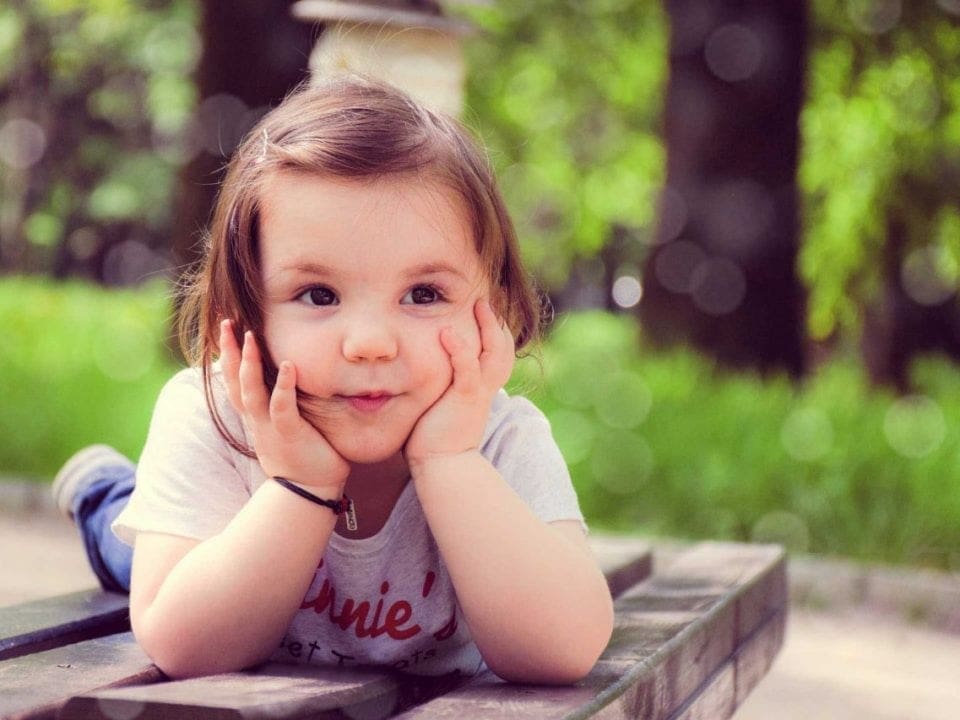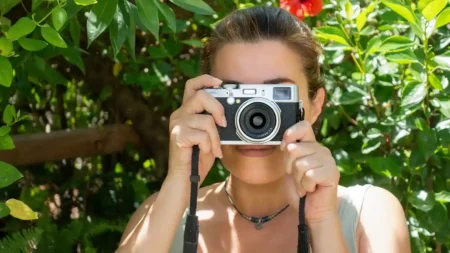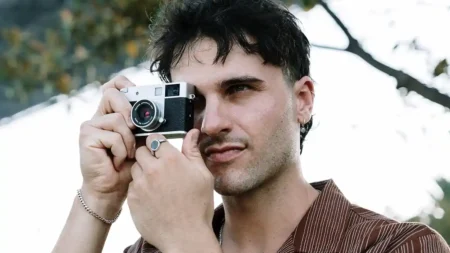Struggling to capture portraits of your toddler that truly reflect their personality? Whether they won’t sit still, keep looking away, or just don’t seem to smile naturally, getting the perfect shot can feel impossible. But don’t worry—we’re here to help!
In this tutorial, we’ll share our best toddler photography tips to help you create stunning, expressive portraits that showcase your child’s unique charm. From engaging with your little one naturally to choosing the right lighting and camera settings, these expert tricks will make a world of difference. Say goodbye to stiff, uncooperative poses and hello to authentic, joyful photos you’ll cherish forever!
Let’s dive in and make toddler photography fun and stress-free!
Toddler photography tips: 01 Peekaboo
Capturing a toddler’s attention can be tricky—they’re naturally curious but also easily distracted. A great way to keep them engaged is by using playful interaction, like a game of peekaboo!
Have a parent or helper hold a noisy toy, stuffed animal, or even their hands near the camera and play peekaboo to grab the child’s attention. Position them so that the toddler looks in the desired direction, whether it’s straight into the camera for eye contact or slightly off to the side for a candid feel.
Bonus Tip: If you’re shooting solo, try holding a small squeaky toy near your lens and giving it a little squeeze to get that wide-eyed, joyful reaction!
Toddler photography tips: 02 Head outdoors
Capturing a toddler’s attention can be a challenge—they’re naturally curious but easily distracted. One of the best ways to keep them engaged is through playful interaction, and nothing works quite like a classic game of peekaboo!
Have a parent or helper stand near the camera with a noisy toy, stuffed animal, or even just their hands and play peekaboo to grab the child’s attention. This trick not only keeps their focus but also encourages genuine expressions—whether it’s wide-eyed wonder or a burst of laughter. Position the helper so the toddler looks exactly where you want—straight into the lens for eye contact or slightly off to the side for a more candid feel.
Bonus Tip: Shooting solo? Hold a small squeaky toy near your lens and give it a quick squeeze. The unexpected sound often results in that perfect moment of surprise and delight!
Toddler photography tips: 03 Co-ordinate with the seasons
When photographing toddlers outdoors, choosing the right clothing colors can make a big difference in how well they complement their surroundings. Dressing them in natural, seasonally inspired tones helps create a visually pleasing and timeless image while keeping the focus on their expression.
Best Colors for Different Outdoor Locations
- Woodlands & Forests → Earthy browns, deep greens, beige, and soft creams help toddlers blend beautifully with nature.
- Grassy Fields & Parks → Muted greens, soft yellows, and pastel blues work well to enhance the fresh, airy feel.
- Beaches & Sand Dunes → White, light beige, soft blues, or pale pinks reflect the calm, neutral tones of the sand and sky.
- Urban Settings (Brick Walls, City Parks, Cobblestone Streets) → Warm neutrals like taupe, olive, and mustard complement the textures, while denim blues and soft reds add contrast without overwhelming the scene.
Bonus Styling Tips:
Keep it simple – Avoid large logos or busy patterns that can be distracting.
Add layers – Light cardigans, knitted hats, or soft scarves not only add warmth but also create depth in the photos.
Consider textures – Linen, wool, and cotton photograph beautifully and add a natural, cozy feel to the image.
By coordinating colors with the season and location, you’ll create stunning, well-balanced toddler portraits that feel organic and timeless.
Toddler photography tips: 04 Beach baby
The beach is a fantastic location for toddler photography—it’s full of exciting sights, sounds, and textures that naturally spark curiosity and joy. Whether it’s the feel of sand between their toes, the rush of waves, or the thrill of chasing seagulls, these moments can lead to adorable, candid expressions.
Adjusting Your Camera Settings for Bright Light
Since beaches tend to be bright and reflective, it’s essential to fine-tune your camera settings to prevent overexposure:
Low ISO (100–200): Since there’s plenty of natural light, keep your ISO as low as possible to avoid grainy images.
Narrower Aperture (f/4–f/8): Helps maintain sharp focus while still allowing some background blur, depending on your composition.
Fast Shutter Speed (1/500s or faster): Toddlers are always on the move! A fast shutter speed will freeze their motion and prevent blur.
Use an ND Filter (if available): If the sunlight is too harsh, an in-built or external neutral density (ND) filter can help reduce brightness while allowing you to use a wider aperture for soft backgrounds.
Bonus Tips for Stunning Beach Shots
Shoot During Golden Hour: Early morning or late afternoon light is softer and more flattering than harsh midday sun.
Bring a Simple Prop: A bucket, toy, or even a flowing dress can add interest and movement to your shot.
Capture Movement: Let your toddler run, splash, or explore—candid action shots are often the most magical!
SEE MORE: 25 portrait photography tips for stunning pictures of people
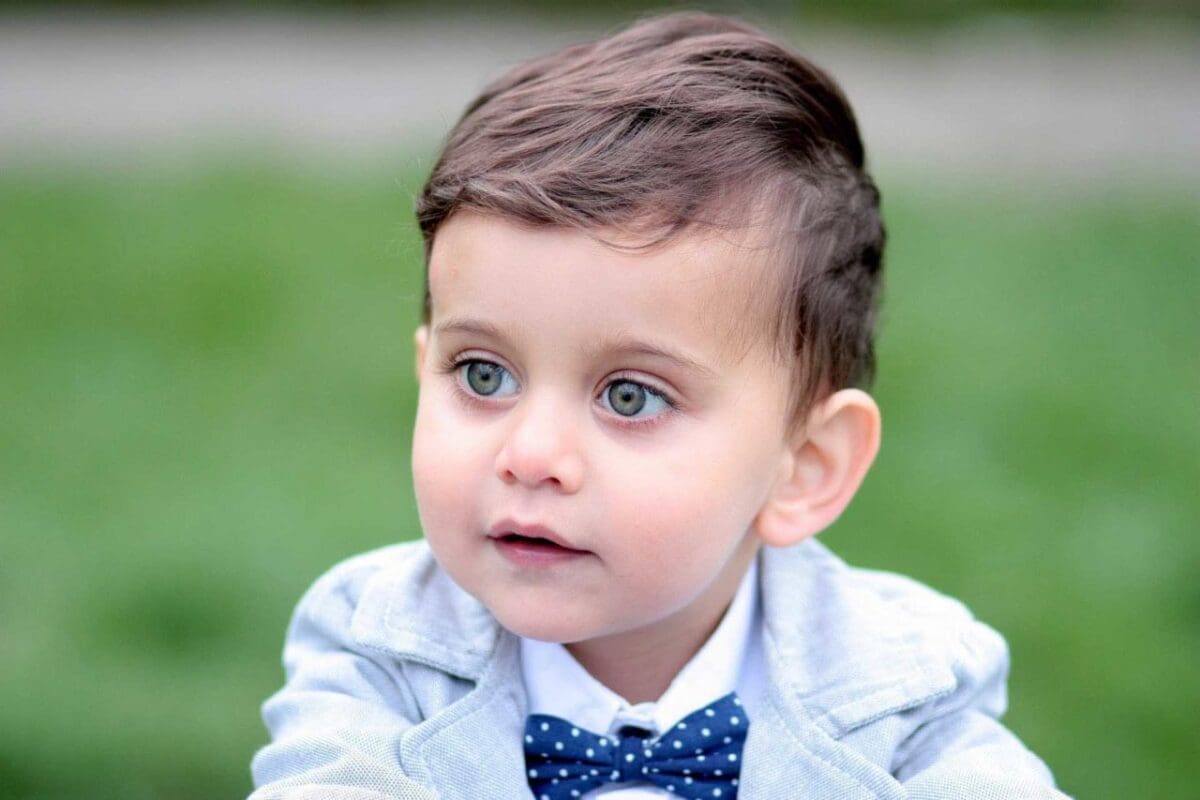
Toddler photography tips: 05 Make it into a game
Photographing one toddler is challenging enough—so if you’re taking on two at once, you’ll need a strategy! A great way to keep both engaged is by turning the session into a fun game, especially if one child is older.
Let the Older Sibling “Be the Photographer”
If the older child feels involved, they’ll be more likely to participate enthusiastically. Try these fun approaches:
Encourage Interaction – Ask the older sibling to tell jokes, play peekaboo, or make silly faces to get natural, joyful reactions from the younger one.
Give Them a “Job” – Hand them a toy camera or ask them to “pose” their sibling, making them feel like part of the creative process.
Play a Movement Game – Have them chase, spin, or dance together, leading to spontaneous laughter and candid shots.
Bonus Tip: Capture the Connection
Rather than forcing stiff poses, let the kids naturally engage with each other—whether it’s a hug, a shared giggle, or even a moment of mischievous teamwork! These shots often feel the most authentic and heartwarming.
Toddler photography tips: 06 Show them your shots
Toddlers are naturally curious, and one of the easiest ways to keep them engaged during a shoot is by showing them their own photos. After taking a shot, let them take a quick peek at the camera screen—they’ll often get excited and want to pose for more just to see what they look like!
Make the Camera Feel Fun, Not Scary
Some toddlers may be unsure about the camera at first. A great way to help them feel at ease is to let them touch it (under supervision, of course).
Let them “press a button” – If you’re comfortable, guide their tiny hands to press the shutter or tap the screen for a fun interactive moment.
Show them their reflection in the lens – This can spark curiosity and encourage playful expressions.
Pretend the camera is a toy – Make silly noises, peek through it like a spyglass, or play “find your face” to keep things lighthearted.
By turning the camera into something fun rather than intimidating, toddlers are more likely to relax, engage, and give you those beautiful, natural expressions.
Toddler photography tips: 07 Look for characters
Photographing a group of infants or toddlers can be tricky—some may be shy, while others are full of energy. A great strategy is to identify the most confident child and photograph them first.
Why This Works:
Leads by Example – When one child sees another having fun and feeling comfortable, they’ll be more likely to follow along.
Eases Group Nerves – Shyer toddlers will see that there’s nothing to be afraid of, making them more cooperative.
Captures Energy & Excitement – A confident child is likely to laugh, smile, or play, setting a fun tone for the session.
Bonus Tip: Turn It Into a Game!
Once the first child is engaged, involve the others by:
Encouraging them to copy the leader’s pose or make funny faces together.
Using positive reinforcement like cheers, claps, or stickers to make participation rewarding.
Letting them take turns looking at their photos to keep their curiosity and excitement up.
Toddler photography tips: 08 Give them a task
One of the best ways to capture natural, candid shots of toddlers is to give them something to do while you photograph them. When they’re focused on an activity, their expressions and movements become genuine and unposed, leading to more engaging images.
Great Task Ideas for Toddler Photography
Puzzles & Coloring Books – Concentrated faces, tiny hands gripping crayons, and moments of excitement when they finish a section make for adorable shots.
Supervised Cooking Sessions – Stirring, sprinkling flour, or tasting ingredients can create heartwarming, story-like images.
Outdoor Exploration – Picking flowers, playing with leaves, or collecting pebbles keeps them engaged while you snap away.
Toy Play – Whether they’re rolling cars, stacking blocks, or cuddling a favorite stuffed animal, these moments capture their true personality.
Bonus Tip: Let the Moment Unfold
Rather than directing every move, let them interact naturally with their task. Some of the best photos come from unexpected moments, like a cheeky grin while sneaking a bite of cookie dough or a proud smile when completing a puzzle!
Toddler photography tips: 09 Pack your wellies
Who doesn’t love a good splash in a puddle? Toddlers sure do! This is a fantastic way to capture joyful, energetic shots, and most little ones will be more than happy to join in the fun.
How to Capture the Perfect Puddle Jump Photo
Use a Fast Shutter Speed (1/1000s or faster): This will freeze water droplets in mid-air and capture every splash in crisp detail.
Frame Creatively: Instead of just full-body shots, try focusing on their feet as they leap—muddy boots, rippling water, and droplets in motion make for artistic, storytelling images.
Brighten the Scene: Have the toddler wear colorful wellies, a raincoat, or hold a vibrant umbrella to add a pop of color against the muted tones of wet ground and cloudy skies.
Bonus Tip: Shoot from a Low Angle
Getting closer to the ground enhances the sense of action and makes the splash look even more dramatic!
SEE MORE: Best camera settings for window-light portraits
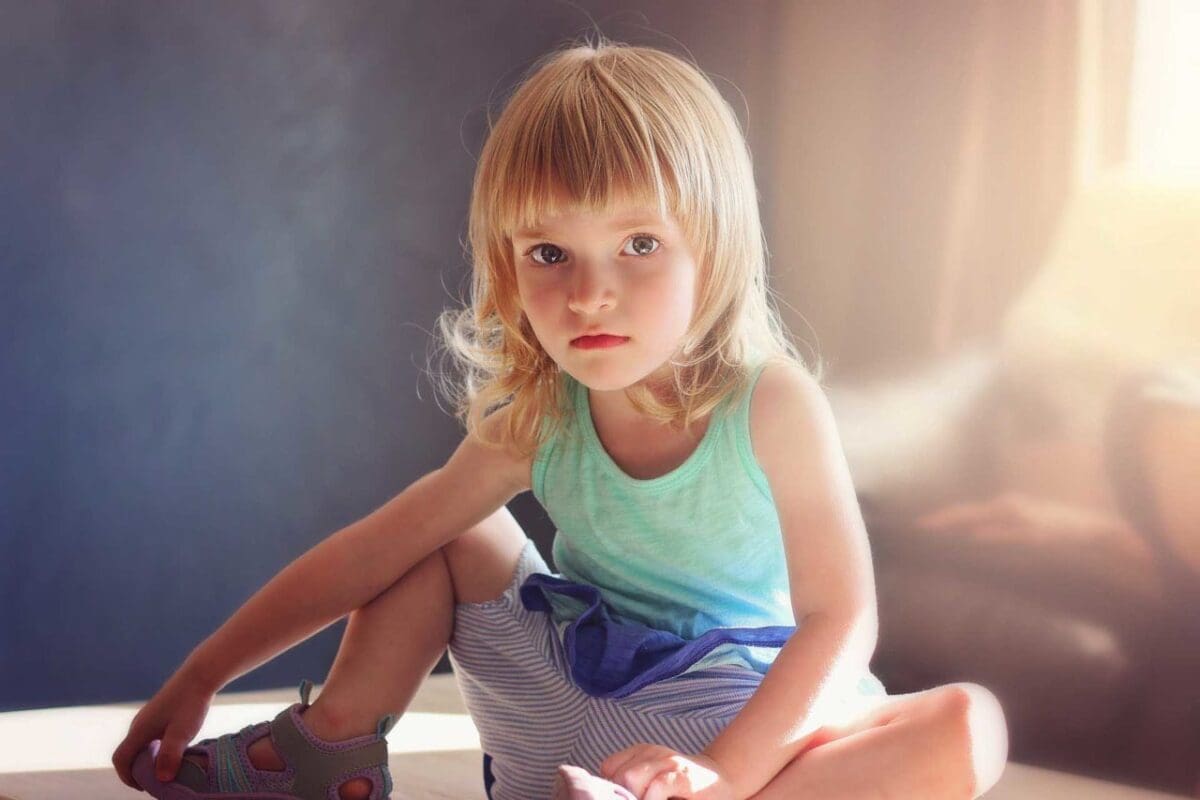
Toddler photography tips: 10 Find them somewhere to sit
Toddlers are always on the move, which can make capturing the perfect shot a challenge. Instead of chasing them around, try giving them a designated spot to sit—this helps keep them occupied and momentarily settled while you snap away.
Best Seating Options for Toddler Portraits:
A Bench or Chair – Great for structured portraits while still allowing for natural movement.
A Step or Low Wall – Encourages a relaxed, casual pose and works well for outdoor settings.
A Cozy Rug or Blanket – Perfect for candid indoor shots or soft, dreamy outdoor portraits in the grass.
A Log or Rock – Ideal for nature-inspired photography with a rustic feel.
Bonus Tip: Stay Ready!
Even though they’re seated, toddlers are unpredictable—they might jump up at any moment! Keep your camera settings dialed in and be ready to capture spontaneous moments, whether it’s a sudden giggle, a curious glance, or an unexpected dash away.
Toddler photography tips: 11 Follow the leader
Children love games, so why not make posing for the camera part of the fun? Turning your session into a game of “Follow the Leader” keeps toddlers engaged while allowing you to capture natural expressions and playful moments.
How to Play:
Start with Silly Poses – Wave your arms, make funny faces, or strike exaggerated poses to get them laughing and involved.
Mix in Natural Poses – After a few goofy ones, transition into softer, more relaxed expressions by doing simple gestures like resting your chin on your hand or looking up at the sky.
Make It a Challenge – Tell them to hold a pose or expression as long as they can—this keeps them focused while you grab the perfect shot.
Bonus Tip: Keep the Energy High!
Use exciting reactions (“Wow! That was perfect! Can you do another one?”) to keep their enthusiasm up and make them forget they’re being photographed.
READ MORE
How to set up a DSLR or CSC once you take it out of the box
6 beginner photography techniques you can use forever
